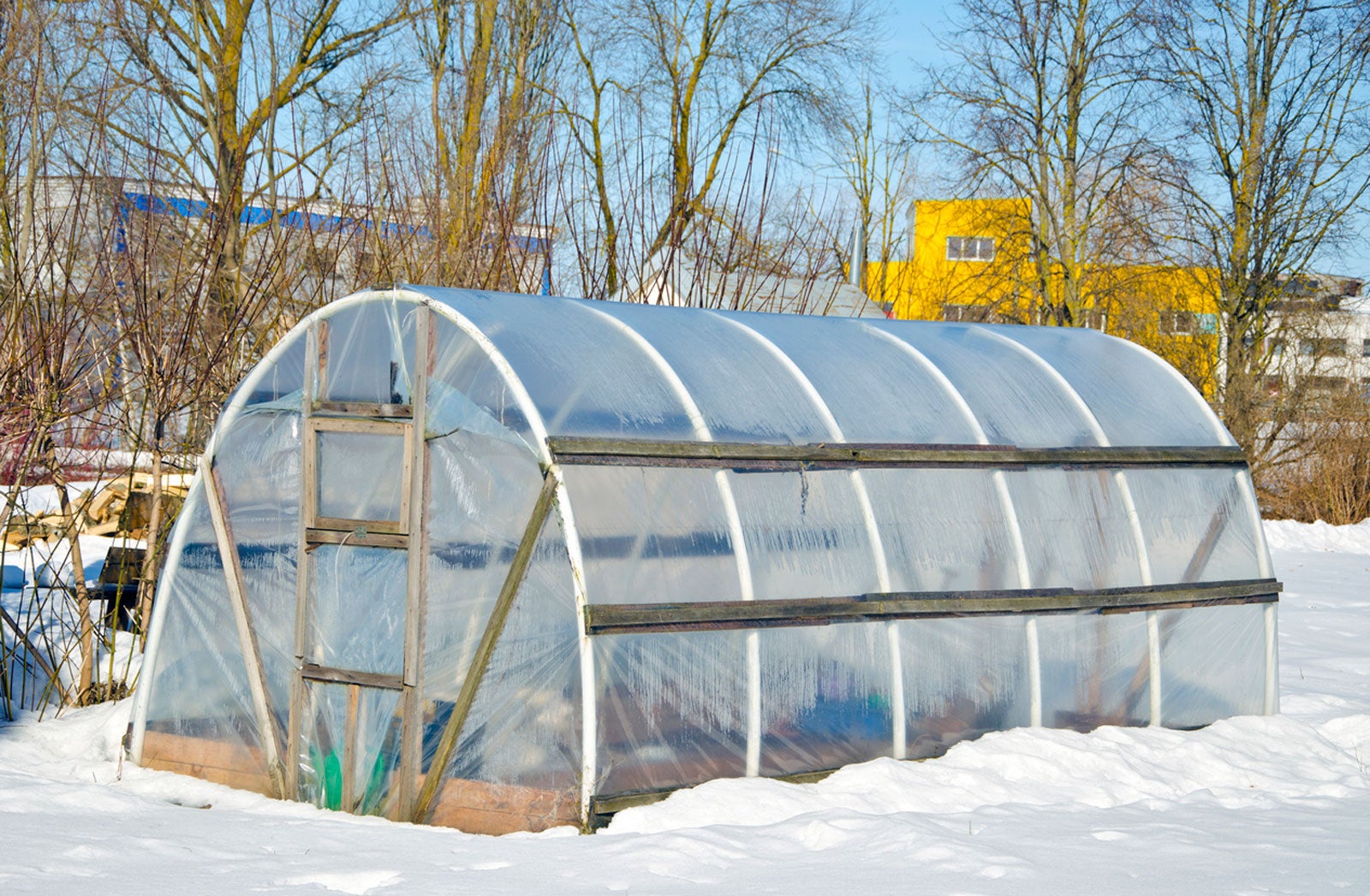
In an unheated greenhouse, growing anything during the cold months of winter may seem impossible. Alas, it is not! Knowing how to use an unheated greenhouse and what plants are best suited are the keys to success. Read on to learn more.
Using an Unheated Greenhouse in Winter
An unheated greenhouse in winter will not only allow you to grow hardy veggies, but you can start tender annuals, propagate perennials, and overwinter cold sensitive plants. Of course, it helps to know how to use an unheated greenhouse (or “cold house,” as it may be called) effectively and what plants will be most suited to this cooler environment.
During the day, a typical greenhouse will trap heat from the sun, which allows the plants inside to stay warm at night. However, when winter nights get really cold, frost damage in the greenhouse can occur without added protection.
What types of protection are available in lieu of greenhouse heaters? This can be as simple as the addition of one or two layers of horticultural fleece over your plants (remember to remove coverings during the day so they do not overheat) and placing some bubble wrap around your pots to help insulate plant roots and prevent clay pots from cracking. Horticultural bubble wrap also can be used to layer the inside of your greenhouse. The much-needed sunlight will still come through, but the extra layer of protection will keep your plants safe at night.
Chances are good your unheated greenhouse is a simple cold frame or hoop type of structure. This structure is very simple to use in the winter and fairly low cost. It should be situated so it is getting the most natural sunlight possible, out of the way of winds, and as close to a water source as possible.
Keep an eye on the thermometer, especially when heading toward spring. In many regions, temperatures can be in the 30s (-1 to 4 C.) one day and in the 60s (16 to 21 C.) the next (in a buttoned-up greenhouse it can be much higher). Plants don’t often recover from sudden overheating, so be sure to open the greenhouse if temperatures threaten to soar.
What to Grow in Unheated Greenhouses
When you have a temperature-controlled greenhouse, the sky is the limit as to what can be grown through the winter months. However, if your greenhouse is a simple affair, lacking any heat, don’t despair. Using an unheated greenhouse can still provide you with plenty of options.
Sign up for the Gardening Know How newsletter today and receive a free copy of our e-book "How to Grow Delicious Tomatoes".
An unheated greenhouse can be used to grow greens during winter, start warm season annuals, propagate landscape perennials, and shelter frost-tender plants through the winter chill.
Besides greens like spinach and lettuce, you can grow cold tolerant veggies such as cabbage and broccoli in your unheated greenhouse. Celery, peas, and the ever-popular Brussels sprouts are also excellent cool-weather veggie choices for unheated greenhouse growing.
Other winter greenhouse plants that thrive during winter months are root vegetables. Winter temperatures actually stimulate sugar production in some root veggies, so you end up with the sweetest carrots, beets, and turnips imaginable. Don’t stop there with your winter greenhouse gardening though.
Perennial herbs are another option – oregano, fennel, chives, and parsley (biennial) do well. Cool-hardy flowers, like calendula, chrysanthemum, and pansy, not only thrive in a cold house but will bloom through the winter. Many annuals and perennials that may not be hardy in your climate outdoors will actually flourish in the greenhouse, even those that are seeded in fall will grow and produce a bounty of blooms in late winter to early spring.

Amy Grant has been gardening for 30 years and writing for 15. A professional chef and caterer, Amy's area of expertise is culinary gardening.
